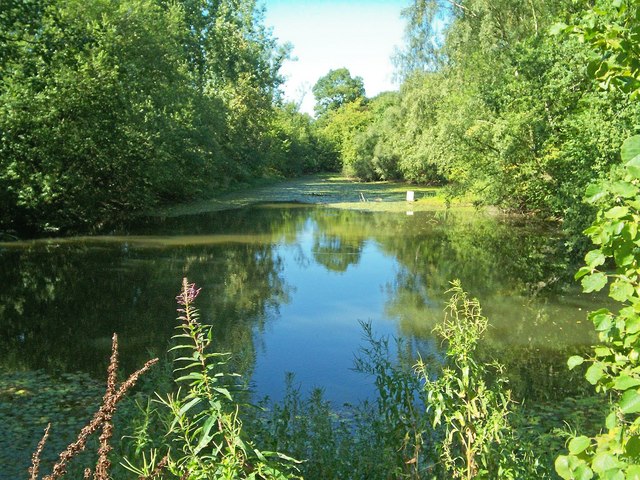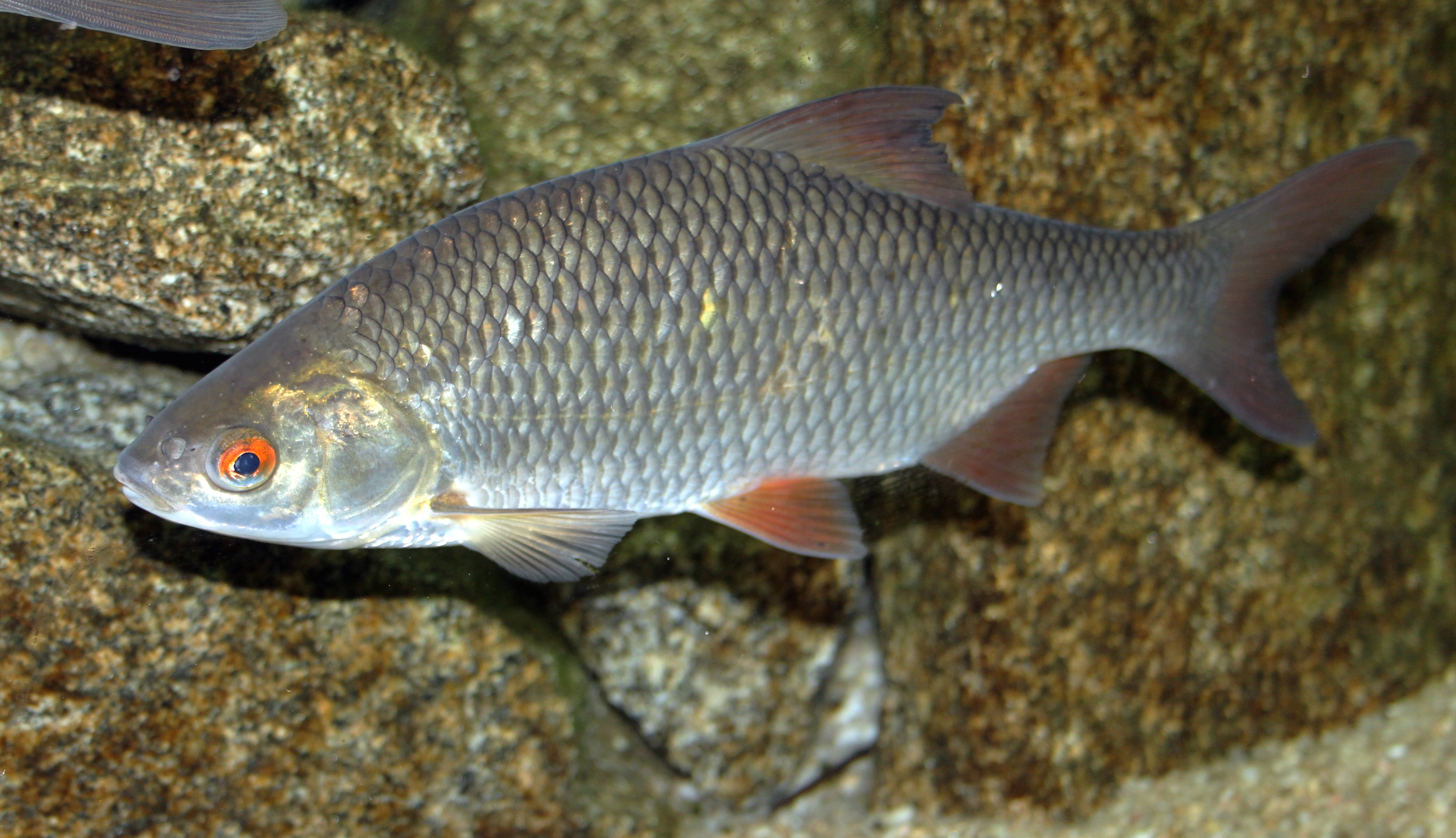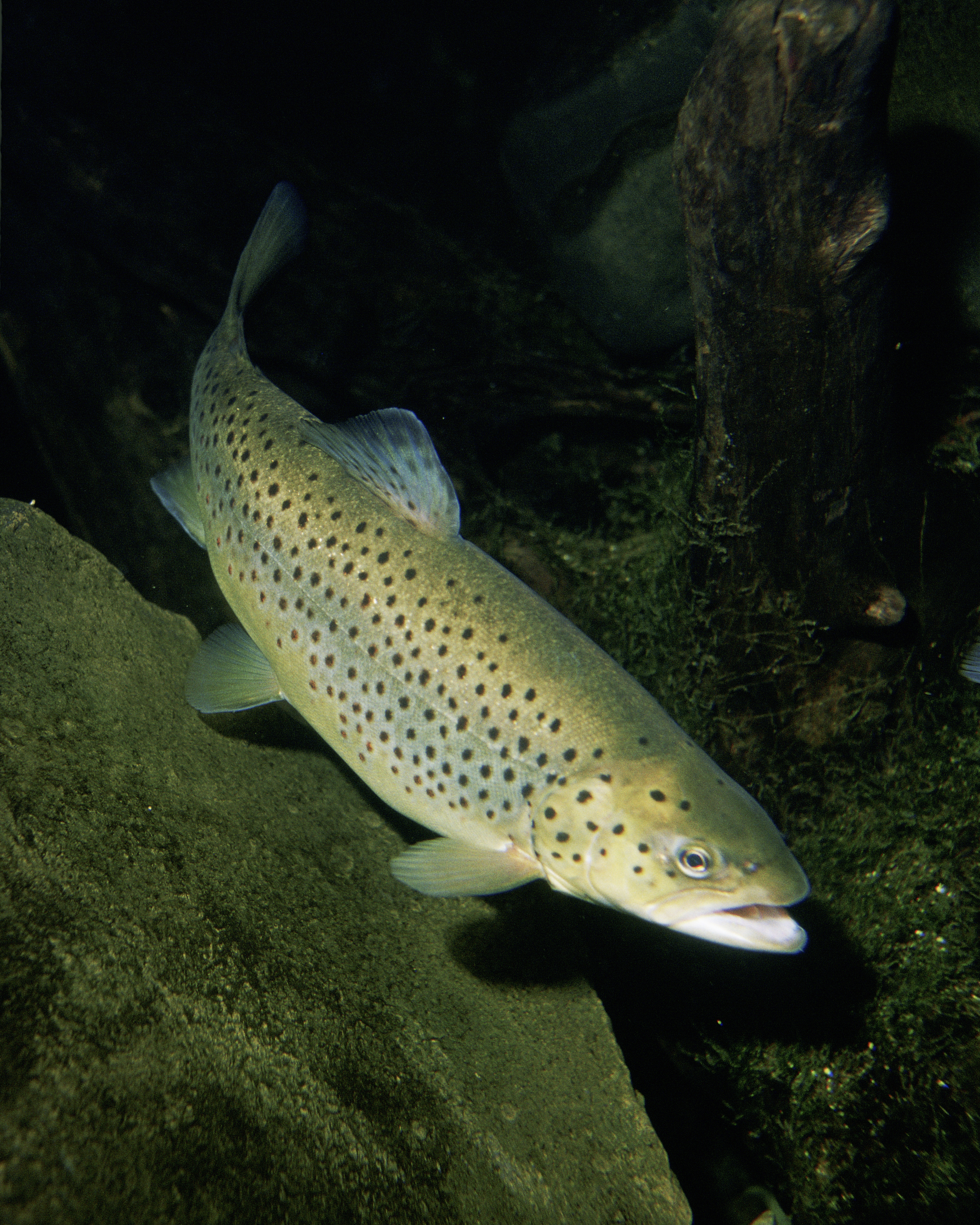|
River Windrush
The River Windrush is a tributary of the River Thames in central England. It rises near Snowshill in Gloucestershire and flows south east for via Burford and Witney to meet the Thames at Newbridge, River Thames, Newbridge in Oxfordshire. The river gives its name to the village of Windrush, Gloucestershire, Windrush in Gloucestershire. River The Windrush starts in the Cotswold Hills in Gloucestershire northeast of Taddington, Gloucestershire, Taddington, which is north of Guiting Power, Temple Guiting, Ford, Gloucestershire, Ford and Cutsdean. It flows for about : through Bourton-on-the-Water, by the village of Windrush, Gloucestershire, into Oxfordshire and through Burford, Witney, Ducklington and Standlake. It meets the Thames at Newbridge upstream of Northmoor Lock. The river-name ''Windrush'' is first attested in an Anglo-Saxon charter of 779, where it appears as ''Uuenrisc''. It appears as ''Wenris'' and ''Wænric'' in charters of 949, and ''Wenríc'' in one of 969. The nam ... [...More Info...] [...Related Items...] OR: [Wikipedia] [Google] [Baidu] |
Bourton-on-the-Water
Bourton-on-the-Water is a village and civil parish in Gloucestershire, England, that lies on a wide flat vale within the Cotswolds Area of Outstanding Natural Beauty. The village had a population of 3,296 at the 2011 census. Much of the village centre is a designated Conservation Area. Description Bourton-on-the-Water's high street is flanked by long wide greens and the River Windrush that runs through them. The river is crossed by five low, arched stone bridges. They were built between 1654 and 1953, leading to the nickname of "Venice of the Cotswolds". The village often has more visitors than residents during the peak tourist season. Some 300,000 visitors arrive each year as compared to under 3,500 permanent residents. There are three churches, Our Lady and St Kenelm Roman Catholic Church, Bourton-on-the-Water Baptist Church and St Lawrence, Church of England. The latter is usually open to visitors during the week. It is a Grade II listed building. A part of it was built ... [...More Info...] [...Related Items...] OR: [Wikipedia] [Google] [Baidu] |
Cutsdean
Cutsdean is a rural village in the Cotswolds and smaller than average sized parish, a few miles east north-east of Cheltenham, Gloucestershire and the same distance south-southeast of Evesham. The River Windrush runs through the village. It can get so windy in the village that the locals call it “two coats Cutsdean”. History The key estates of this chapelry of Bredon parish, can be traced a generation or more further than typical, back to Anglo-Saxon England charters. Its main estate and church were long possessions of the Worcester Priory, and were part of Worcestershire until 1931, when the detached part (exclave) status was resolved, and it was moved to Gloucestershire. Its population was 116, across 30 households in 1901; both figures stood in 1911, unchanged. River The west of the parish is marked by the Windrush. It has been briefly dammed, creating a tree-lined head of water, assisting the flow below in dry weather, also allowing for some algae which help to fee ... [...More Info...] [...Related Items...] OR: [Wikipedia] [Google] [Baidu] |
Dace
A dace is a small fish that can be one of many different species. The unmodified name is usually a reference to the common dace (''Leuciscus leuciscus''). This, like most fish called "daces", belongs to the family Leuciscidae, mostly in subfamily Leuciscinae. Daces in the Cyprinidae: * Common dace, '' Leuciscus leuciscus'' * Chinese mud carp, '' Cirrhinus chinensis'' (called "dace" in Hong Kong) or mud carp (''Cirrhinus molitorella'') * Columbia River dace, '' Ptychocheilus oregonensis'' (a pikeminnow) * Desert dace, '' Eremichthys acros'' (a monotypic genus) * European daces, genus ''Leuciscus'' * Fallfish, '' Semotilus corporalis'' (a creek chub called "dace" in Canada) * Horned dace, '' Semotilus atromaculatus'' (a creek chub) * Japanese dace '' Tribolodon hakonensis'', genus '' Tribolodon'' * Korean splendid dace, '' Coreoleuciscus splendidus'' * Lake Candidus dace, '' Candidia barbata'' * Mexican daces, genus †'' Evarra'' * Moapa dace, '' Moapa coriacea'' (a monotypic ... [...More Info...] [...Related Items...] OR: [Wikipedia] [Google] [Baidu] |
Common Roach
The roach, or rutilus roach (''Rutilus rutilus''), also known as the common roach, is a fresh- and brackish-water fish of the family Cyprinidae, native to most of Europe and western Asia. Fish called roach can be any species of the genera ''Rutilus'', '' Leucos'' and ''Hesperoleucus'', depending on locality. The plural of the term is also roach. Description The roach is a small fish, often reaching no more than about ; maximum length is . Its body has a bluish-silvery colour and becomes white at the belly. The fins are red. The number of scales along the lateral line is 39–48. The dorsal and anal fins have 12–14 rays. Young specimens have a slender build; older specimens acquire a higher and broader body shape. The roach can often be recognized by the big red spot in the iris above and beside the pupil. Colours of the eye and fins can be very pale, however, in some environments. In Central and Northern Europe, the common roach can most easily be confused with the common ... [...More Info...] [...Related Items...] OR: [Wikipedia] [Google] [Baidu] |
Chub
Chub is a common fish name. It pertains to any one of a number of ray-finned fish in several families and general. In the UK, the term ''chub'' usually refers to the species '' Squalius cephalus''. In addition, see sea chub. In family Cyprinidae * Bigeye chub, genus '' Hybopsis'' * Creek chub, genus '' Semotilus'' * Fallfish, genus '' Semotilus'' * European chub, genus ''Squalius'' * Flame chub, ''Hemitremia flammea'' (a monotypic genus) * Flathead chub, genus '' Platygobio'' * Hornyhead chub, genus '' Nocomis'' * Lake chub, genus ''Couesius'' * Least chub, ''Iotichthys phlegethontis'' (a monotypic genus) * Leatherside chub, ''Snyderichthys copei'' (a monotypic genus) * Oregon chub, genus '' Oregonichthys'' * Ponto-Caspian chub, genus '' Petroleuciscus'' * Slender chub, genus '' Erimystax'' * Western chub, genus '' Gila'' (including ''Siphateles'') * Genus ''Algansea'' * Genus ''Notropis'' (eastern shiners) are also sometimes called "chubs" In other families * Sea chub ... [...More Info...] [...Related Items...] OR: [Wikipedia] [Google] [Baidu] |
Perch
Perch is a common name for freshwater fish from the genus ''Perca'', which belongs to the family Percidae of the large order Perciformes. The name comes from , meaning the type species of this genus, the European perch (''P. fluviatilis''). Many species of freshwater game fish more or less resemble perch, but belong to different genera. In fact, the exclusively saltwater-dwelling red drum (which belong to a different order Acanthuriformes) is often referred to as a "red perch", though by definition perch are freshwater species. Though many fish are referred to as perch as a common name, to be considered a true perch, the fish must be of the family Percidae. Species Most authorities recognize three species within the perch genus: * The European perch (''P. fluviatilis'') is primarily found in Europe, but a few can also be found in South Africa, and even as far east on the Southern hemisphere as Australia. This species is typically greenish in color with dark vertical ba ... [...More Info...] [...Related Items...] OR: [Wikipedia] [Google] [Baidu] |
Thymallus Thymallus
''Thymallus thymallus'', the grayling or European grayling, is a species of freshwater fish in the salmon family (biology), family Salmonidae. It is the only species of the genus ''Thymallus'' (the graylings) native to Europe, where it is widespread from the United Kingdom and France to the Ural Mountains in Russia, and Balkans on the south-east, but does not occur in the southern parts of the continent. It was introduced to Morocco in 1948, but it does not appear to have become established there. Description The grayling grows to a maximum recorded length of and a maximum recorded weight of . Of typical ''Thymallus'' appearance, the grayling proper is distinguished from the similar Arctic grayling (''T. arcticus arcticus'') by the presence of 5–8 dorsal fin, dorsal and 3–4 anal fin, anal spines, which are absent in the other species; ''T. thymallus'' also has a smaller number of soft rays in these fins. Individuals of the species have been recorded as reaching an age of 14 y ... [...More Info...] [...Related Items...] OR: [Wikipedia] [Google] [Baidu] |
Trout
Trout (: trout) is a generic common name for numerous species of carnivorous freshwater ray-finned fishes belonging to the genera '' Oncorhynchus'', ''Salmo'' and ''Salvelinus'', all of which are members of the subfamily Salmoninae in the family Salmonidae. The word ''trout'' is also used for some similar-shaped but non-salmonid fish, such as the spotted seatrout/speckled trout (''Cynoscion nebulosus'', which is actually a croaker). Trout are closely related to salmon and have similar migratory life cycles. Most trout are strictly potamodromous, spending their entire lives exclusively in freshwater lakes, rivers and wetlands and migrating upstream to spawn in the shallow gravel beds of smaller headwater creeks. The hatched fry and juvenile trout, known as ''alevin'' and ''parr'', will stay upstream growing for years before migrating down to larger waterbodies as maturing adults. There are some anadromous species of trout, such as the steelhead (a coastal subs ... [...More Info...] [...Related Items...] OR: [Wikipedia] [Google] [Baidu] |
Eilert Ekwall
Bror Oscar Eilert Ekwall (8 January 1877 in Vallsjö – 23 November 1964 in Lund) was a Swedish academic, Professor of English at Sweden's Lund University from 1909 to 1942 and one of the outstanding scholars of the English language in the first half of the 20th century. He wrote works on the history of English, but he is best known as the author of numerous important books on English place-names (in the broadest sense) and personal names. Scholarly works His chief works in this area are ''The Place-Names of Lancashire'' (1922), ''English Place-Names in -ing'' (1923, new edition 1961), ''English River Names'' (1928), ''Studies on English Place- and Personal Names'' (1931), ''Studies on English Place-Names'' (1936), ''Street-Names of the City of London'' (1954), ''Studies on the Population of Medieval London'' (1956), and the monumental ''Concise Oxford Dictionary of English Place-Names'' (1936, new editions 1940, 1947/51 and the last in 1960). The ''Dictionary'' remained the st ... [...More Info...] [...Related Items...] OR: [Wikipedia] [Google] [Baidu] |
Old Celtic
Proto-Celtic, or Common Celtic, is the hypothetical ancestral proto-language of all known Celtic languages, and a descendant of Proto-Indo-European. It is not attested in writing but has been partly reconstructed through the comparative method. Proto-Celtic is generally thought to have been spoken between 1300 and 800 BC, after which it began to split into different languages. Proto-Celtic is often associated with the Urnfield culture and particularly with the Hallstatt culture. Celtic languages share common features with Italic languages that are not found in other branches of Indo-European, suggesting the possibility of an earlier Italo-Celtic linguistic unity. Proto-Celtic is currently being reconstructed through the comparative method by relying on later Celtic languages. Though Continental Celtic presents much substantiation for Proto-Celtic phonology, and some for its morphology, recorded material is too scanty to allow a secure reconstruction of syntax, though some compl ... [...More Info...] [...Related Items...] OR: [Wikipedia] [Google] [Baidu] |
Welsh Language
Welsh ( or ) is a Celtic languages, Celtic language of the Brittonic languages, Brittonic subgroup that is native to the Welsh people. Welsh is spoken natively in Wales by about 18% of the population, by some in England, and in (the Welsh colony in Chubut Province, Argentina). It is spoken by smaller numbers of people in Canada and the United States descended from Welsh immigrants, within their households (especially in Nova Scotia). Historically, it has also been known in English as "British", "Cambrian", "Cambric" and "Cymric". The Welsh Language (Wales) Measure 2011 gave the Welsh language official status in Wales. Welsh and English are ''de jure'' official languages of the Senedd (the Welsh parliament), with Welsh being the only ''de jure'' official language in any part of the United Kingdom, with English being merely ''de facto'' official. According to the 2021 United Kingdom census, 2021 census, the Welsh-speaking population of Wales aged three or older was 538,300 ( ... [...More Info...] [...Related Items...] OR: [Wikipedia] [Google] [Baidu] |
Anglo-Saxon Charter
Anglo-Saxon charters are documents from the History of Anglo-Saxon England, early medieval period in England which typically made a grant of Real Estate, land or recorded a Privilege (legal ethics), privilege. The earliest surviving charters were drawn up in the 670s: the oldest surviving charters granted land to the Roman Catholic Church, Church, but from the eighth century, surviving charters were increasingly used to grant land to lay person, lay people. The term ''charter'' covers a range of written legal documentation, including diplomas, writs and Will and testament, wills. A diploma was a royal charter that granted rights over land or other privileges by the king, whereas a writ was an instruction (or prohibition) by the king which may have contained evidence of rights or privileges. Diplomas were usually written on parchment in Latin, but often contained sections in the vernacular, describing the bounds of Estate (land), estates, which often correspond closely to modern pa ... [...More Info...] [...Related Items...] OR: [Wikipedia] [Google] [Baidu] |








